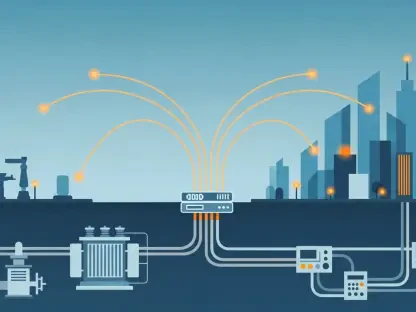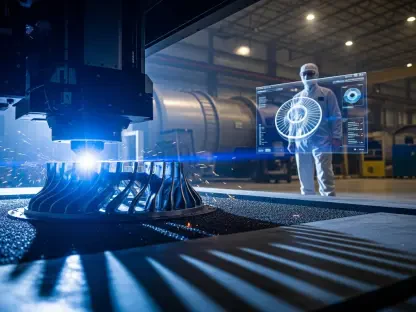Tesla’s entry into China’s rapidly evolving autonomous driving market marks a significant technological milestone, as the company rolls out its Full Self-Driving (FSD) v13 firmware. This event signifies the first deployment of Tesla’s FSD software outside North America, highlighting the company’s ambition to become a global leader in self-driving technology. Named firmware v13 (2024.45.32.12), the Chinese launch is a close variant of FSD v13.2.6, promising to bring advanced driving automation to one of the world’s most congested and challenging driving environments.
Overcoming Regulatory Hurdles and Market Challenges
Securing Regulatory Approvals
One of Tesla’s major achievements with the Chinese FSD rollout was overcoming rigorous regulatory scrutiny. Last year, the company had mapped out a strategic roadmap aiming to launch its FSD in China and Europe by the first quarter of 2025, contingent upon obtaining the necessary regulatory approvals. China has given the nod, although Europe remains a challenge due to stringent regulations, making a Q1 2025 rollout in Europe uncertain. Navigating through complex regulatory frameworks demonstrates Tesla’s commitment to expanding its innovative technologies beyond American shores.
Tesla’s feat of launching FSD in China did not come without its share of hurdles, especially considering the trade and data security tensions between China and the United States. As a result, Tesla adopted an alternative approach to training its neural network, utilizing publicly available Chinese road and traffic videos. This detour from its traditional method of using direct video feeds from Tesla vehicles in China was essential to align with the stringent data security regulations imposed by the Chinese government. This strategic pivot highlights Tesla’s capability to adapt its methodologies while maintaining the high standards expected of its autonomous driving technology.
Adaptation to Local Traffic Conditions
Transitioning Tesla’s FSD to effectively manage China’s unique and often chaotic urban driving environment posed another significant challenge. Initial user videos of FSD v13 in China have begun appearing on social media, illustrating the software’s prowess in handling distinctive road conditions. Unlike in North America, Chinese roads are often filled with numerous pedestrians and three-wheeler vehicles, necessitating more sophisticated and adaptable driving algorithms. Tesla refers to its Chinese version of the software as ‘City Autopilot,’ aligning it with the specific needs and regulatory frameworks of the region.
These user-generated videos from early adopters show impressive results, with FSD v13 capable of navigating night-time traffic, managing crosswalks and stoplights, and even executing complex maneuvers like U-turns and driving through underground parking garages with astonishing precision. The ability to handle such diverse driving scenarios attests to the robustness and versatility of Tesla’s FSD software, reinforcing the potential for its broader adoption. The successful adaptation and performance of FSD v13 against the backdrop of Chinese traffic showcase Tesla’s dedication to refining its algorithms to meet local driving demands.
The Strategic Significance of China’s Autonomous Market
Market Potential and Revenue Growth
China’s burgeoning market for autonomous vehicles presents a lucrative opportunity for Tesla, with the country being one of the world’s largest automotive markets. The introduction of FSD in China holds substantial revenue potential, contingent on how well the software is received by Chinese consumers. The successful deployment and positive early reviews could set the stage for widespread adoption, translating into significant financial gains for Tesla. As Tesla pioneers the expansion of its autonomous driving technologies, its growing footprint in China could capture a crucial segment of the global market.
The strategy behind launching in China involves more than just capitalizing on immediate revenue prospects. It represents a broader vision of solidifying Tesla’s foothold in the global autonomous driving landscape. By paving the way in China, Tesla not only opens up a massive new market but also positions itself as a formidable player capable of meeting diverse and complex driving needs worldwide. The move could serve as a template for further international expansions into other regions, eventually creating a seamlessly interconnected network of autonomous driving systems globally.
Enhancing Global Influence and Technical Prowess
Tesla’s recent entry into China’s dynamic autonomous driving market is a noteworthy technological advancement, marked by the launch of its Full Self-Driving (FSD) v13 firmware. This launch stands out as the first time Tesla’s FSD software has been introduced outside North America, underscoring the company’s goal to establish itself as a global leader in autonomous driving technology. The firmware, referred to as v13 (2024.45.32.12), rolled out in China, is a closely related version of FSD v13.2.6. It aims to bring sophisticated driving automation to China, known for its densely populated and challenging driving conditions. This move signifies Tesla’s confidence in its technology and its potential to revolutionize driving in one of the busiest automotive markets in the world. By deploying FSD in such a demanding environment, Tesla hopes to demonstrate the robustness and reliability of its system, further solidifying its position at the forefront of autonomous vehicle technology worldwide.









